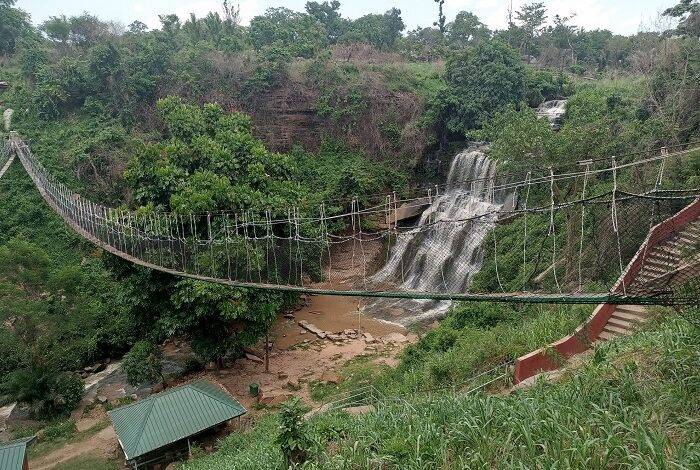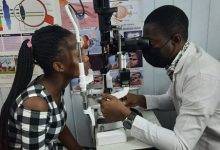
It is refreshing to learn that there is an ongoing development and improvement of infrastructure at tourist and heritage sites in the country. This forms part of a broader effort to develop the entire tourism sector to reposition Ghana on the global tourism map.
This move was long overdue as the state of infrastructure at some tourist sites such as linking roads, and social amenities are nothing to write home about. Over the years, tourists, industry watchers and the general public have always demanded that authorities develop tourist sites to make them worth visiting.
It is against this background that the Ministry of Tourism, Arts, and Culture secured a $40 million loan facility from the World Bank to among other things finance upgrade of infrastructure at tourist and heritage sites.
The facility which was secured in 2019 is the financial backbone for the implementation of the Ghana Tourism Development Authority (GTDP).
The four components of the project are Strengthening tourism enabling environment; Developing tourism sites and destinations; Tourism enterprise support and project management and institutional strengthening.
Component two-developing tourism sites and destinations is very fascinating. To say nature has blessed Ghana with eco-tourism sites would be an understatement. There are eco-tourism sites located across the length and breadth of Ghana. However, most of these sites have been in their ‘raw states’ since their discovery.
For example, in the erstwhile Brong Ahafo Region (Bono, Bono East and Ahafo), there are many tourist sites including the Kintampo Waterfalls, Buabeng-Fiema Monkey Sanctuary, Fuller Falls, Buoyam Bats Caves, Kunsu Slave Caves and Wench-Nchiraa Waterfalls.
Other sites are Duasidan Monkey Sanctuary near Dormaa-Ahenkro, Dandwa Waterfalls in the Nkoranza Municipality, Menji crocodile pond in the Tain District, Mim Rock, and Kunsu Josua Waterfalls near Kintampo.
However, most of these sites have seen very little or no infrastructural development. Roads connecting to these places are unmotorable, there are no recreational centres, and befitting places of convenience. These have culminated to adversely affect patronage of these sites, thus denying the country benefits such as revenue.
With the implementation of GTDP under the watch of the Tourism Ministry, I hope that work will go according to schedule and specifications at all the tourist sites earmarked to benefit from the project.
There is no doubt that upgrading tourist sites is a catalyst to attracting more patrons. A classic example is the Kintampo Waterfalls. The site received a facelift after the infamous disaster in March 2017 which claimed 17 lives who were mostly students of Wenchi Methodist SHS.
After the disaster, staircases at the waterfalls were reconstructed to be friendlier, places of convenience, pavilions and changing rooms were given facelifts. An 80 by 90-meter suspended canopy walkway has also been constructed at the waterfalls. The site was reopened to tourists in November.
These developments have elevated Kintampo waterfalls as one of the preferred tourists’ destinations in the country. Statistics from the GTA indicate that in 2021, a total of 19,021 tourists (domestic and foreigners) visited the site generating revenue of GH¢124,168.
Speaking with journalists during recent inspection tour of the Kintampo Waterfalls, Prof. Gabriel Eshun, Technical Advisor of GTDP, indicated that “government is looking for a new pathway to diversify the economy to increase the country’s Gross Domestic product (GDP) from existing traditional ways such as cocoa, timber and minerals, hence the decision to invest in the sector.”
He indicated that “more recreational facilities will be constructed at eco-tourism sites as it was done at the Kintampo waterfalls. Currently, there is ongoing laying of pavement blocks at walkways here. More iconic tourist sites will be developed to attract more tourists into the country as well as enhance domestic tourism.”
The ultimate goal of the Tourism Ministry is to leverage GTDP to transform the industry and make it the leading contributor to Ghana’s gross domestic product (GDP).
However, one thing that needs to be addressed to make the dream a reality is the deplorable nature of road networks within the location of most iconic tourist sites. Some of the roads are unmotorable, especially in the rainy seasons.
Again, development should not be a one-off initiative. There must be a sustainable plan for tourism growth and development. Today, we are seeing upgrades and development thanks to GTDP. Authorities must look beyond securing loans and grants for such developments in future.
Metropolitan, Municipal and District Assemblies (MMDAs) are the primary beneficiaries of tourism and therefore it would be a step in the right direction if there can be a deliberate policy where the various Assemblies would allocate part of their resources to develop these tourist sites in their localities.
At least, the Assemblies could periodically finance reshaping of the roads and construct and maintain basic social amenities to make the sites more hospitable to attract more tourists. This will go a long way to boost revenue generation and create job opportunities.
[The writer is the Bono Region Correspondent of the Ghanaian Times]
BY DANIEL DZIRASAH


